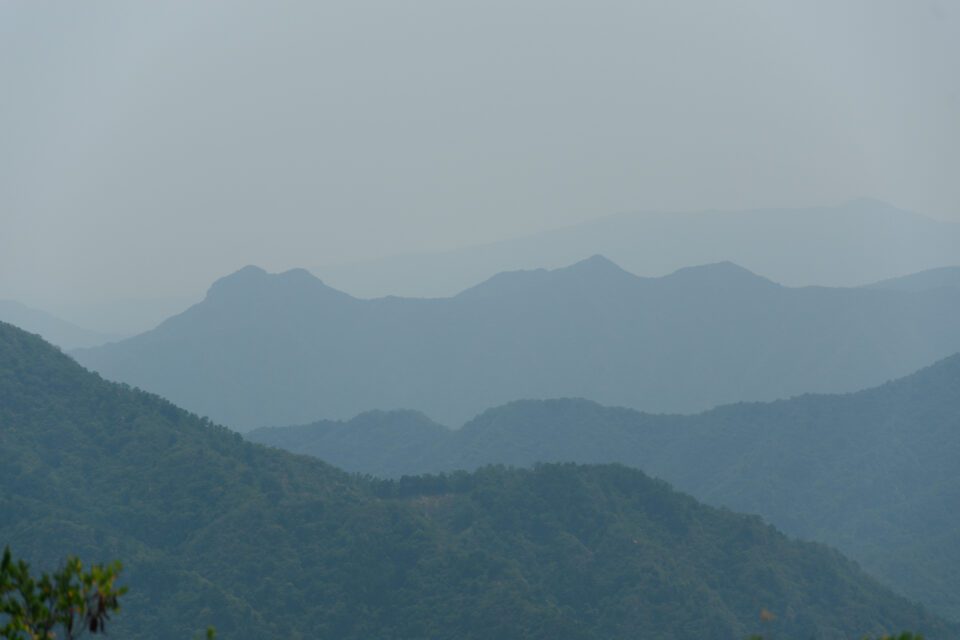If you close your eyes, point your camera in any direction, and take a picture, I’m willing the bet the photo won’t be a success. Unless you’re doing some artsy “blindfolded photography” project, it completely lacks intent or any engagement with the scene in front of you.

It’s not like that’s a common thing photographers do, but I wanted to mention it as the most extreme example of not perceiving things in photography. It’s hardly more personal than a security camera or a photo you took by accident.
But it’s something we can build from. The obvious step above the blindfolded approach is to take a photo of an actual subject: notice something, point your camera at it, and capture a quick photo.
That’s sure to lead to a better photo than the prior approach most of the time, but it’s not yet a recipe for success. While your photo does at least have a reason to exist this time – it reproduces something you saw – it still lacks artistic intent, and you’re only engaging with the subject / perceiving it at a very surface level.

The next level (where I hope that most photographers at least start) is to notice something, point your camera at it, and make some basic decisions about the shot, such as your exposure and an initial composition. It may not be a masterpiece, but you’re putting some thought into how you want the photo to look and not look. This is a good starting point, and it shows some degree of “working with the scene” – trying to perceive what’s in front of you at a more meaningful level.

The next step up is to find something worth photographing. You must rule out a lot of subjects that won’t make a good photo and deliberately search for subjects that will.
That involves seeing things from a slightly different perspective. Sometimes, what looks good in a photo isn’t all that noteworthy in the real world, and you might skip over it if you’re not paying close attention. An example that comes to my mind is one waterfall in Iceland (Kirkjufellsfoss) that a million people photograph every year. It looks amazing in photos, but when I visited it a few years ago, I couldn’t help but think it didn’t look as interesting in person, especially compared to Iceland’s other breathtaking waterfalls. Without the internet, I doubt I’d have ever realized there was a photo to be had there.
Some subjects are the opposite, where they look amazing in person but don’t fully translate to photos. I find that many landscapes are this way on a bright, sunny day around noon. These can be great conditions for hiking and enjoying the scenery, but their lighting conditions may not be anything interesting for photography. (I’m not saying they’re always bad conditions for photos, though.)
In any case, finding a worthwhile subject is as important as it gets. It takes practice to differentiate between an interesting sight in the real world and an interesting subject for a photo. Another way to describe this process is engaging with what’s in front of you and shifting your perspective from an onlooker to a photographer.
With some basic compositional, exposure, and post-processing decisions, you can get a good photo of interesting subjects even if you don’t do anything else particularly special. The subject’s own merits – which you noticed and framed the shot around – are enough to carry a lot of images reasonably far.
I hardly did anything special for the photo below other than recognize and point my lens at an interesting subject. This method leaves a lot to be desired in photography, but if the subject is interesting enough, it can still give you some solid photos.

What I consider the “highest level” of perception as a photographer is to be on the same page as your subject, where you know (consciously or subconsciously) how to portray it as best as possible. You’re capturing the composition and the light which best complement your subject. The camera settings and the technical side of things are optimal for how you want the photo to look. And you’re post-processing and displaying the photo in a way that conveys your message as well as possible.
This level of perception in photography is aspirational; it is almost impossible to actually achieve. You’ll rarely have “perfect” light, a “perfect” subject, a “perfect” composition, and so on, and you don’t need to. What I’m talking about instead is simply perceiving more about your subject – engaging with the scene and realizing how to capture it better in a photo (or realizing if it’s not even worth photographing in the first place). The more tuned-in you are to what’s in front of the lens, the better results you’ll get.

The final thing I want to emphasize is that despite my snappy captions – “the thoughtless photographer,” “the more engaged photographer,” etc. – you are not a member of one of these categories. You’re not a “level 3” or “level 4” photographer; there is no such thing. Rather, all of these are modes that every single photographer assumes at different times! Heck, the same photographer took all five photos in this article (me), and all except for the last shot were taken within an hour of each other. It’s not like my skills improved from “level 0” to “level 3” in less than an hour; I just started actually paying attention and perceiving the subject in front of me. If you find yourself taking too many “level 1” shots, it’s not that you’re a bad photographer, it’s that you need to clear your head and start engaging more with the scene. (Though if you find yourself taking too many “level 0” shots, there may be a problem…)
In my next article, I’ll go through some of the techniques that I’ve found helpful for perceiving a subject better and taking stronger photos as a result. Keep an eye out for part two, “How to Make a Photo Feel More Deliberate.”